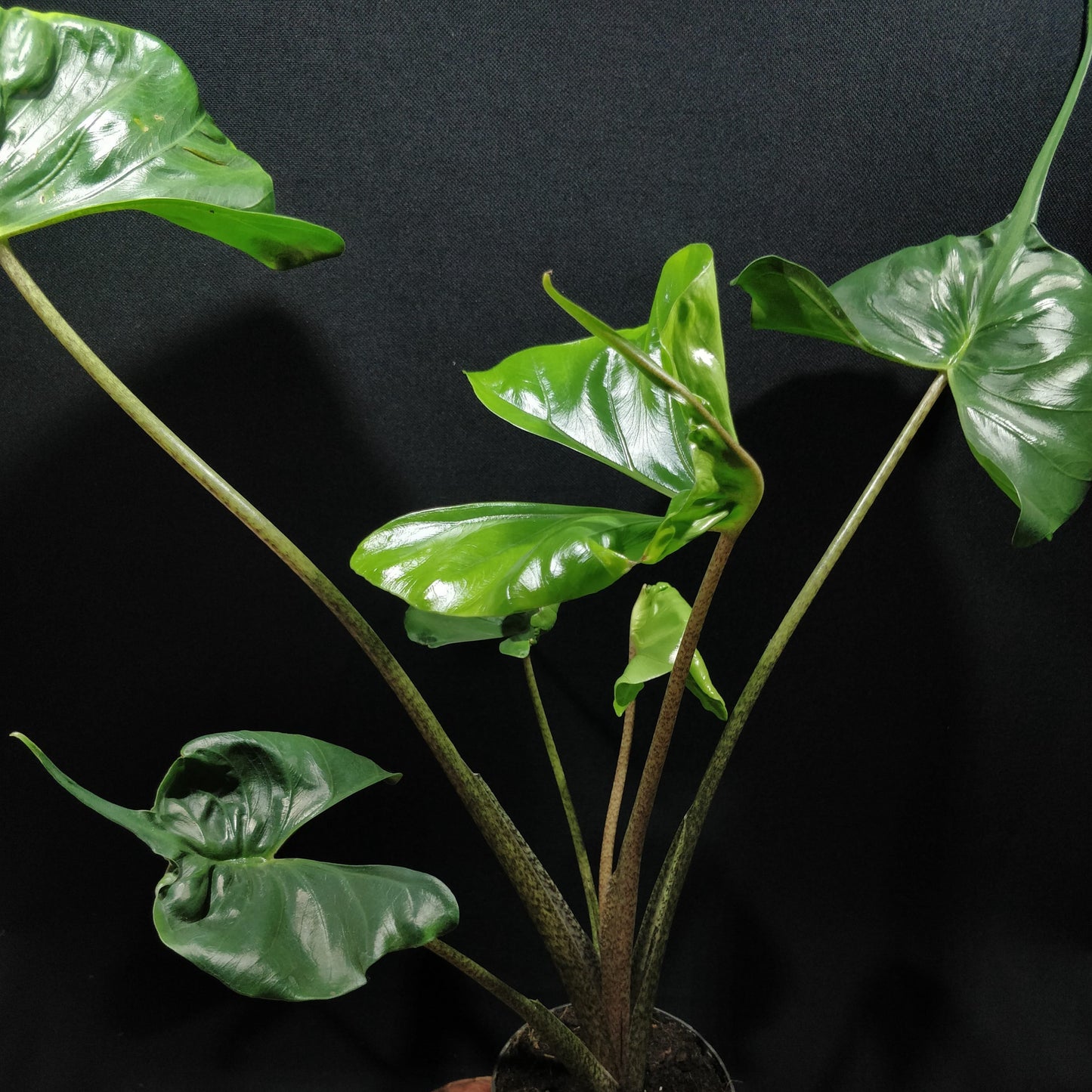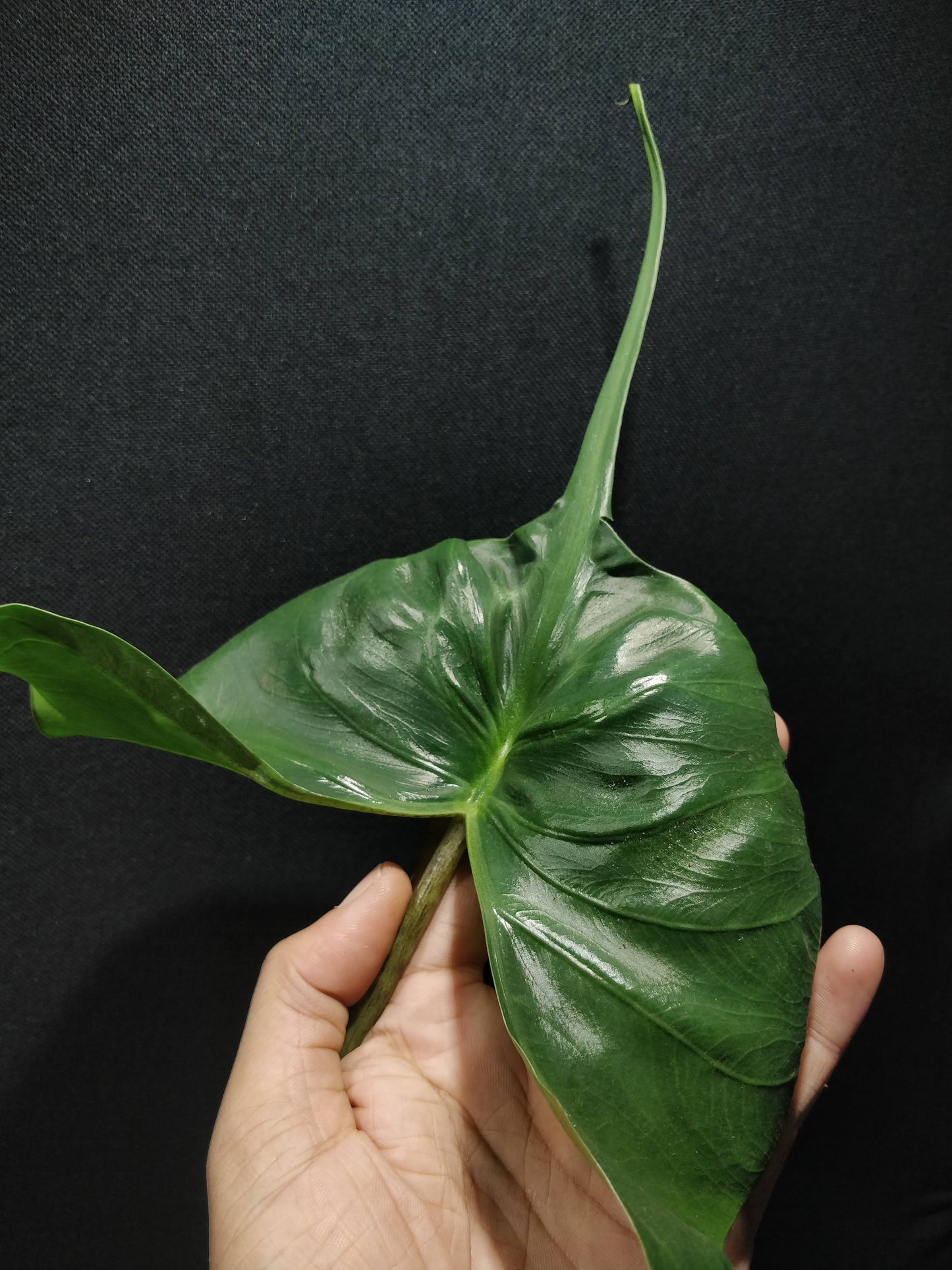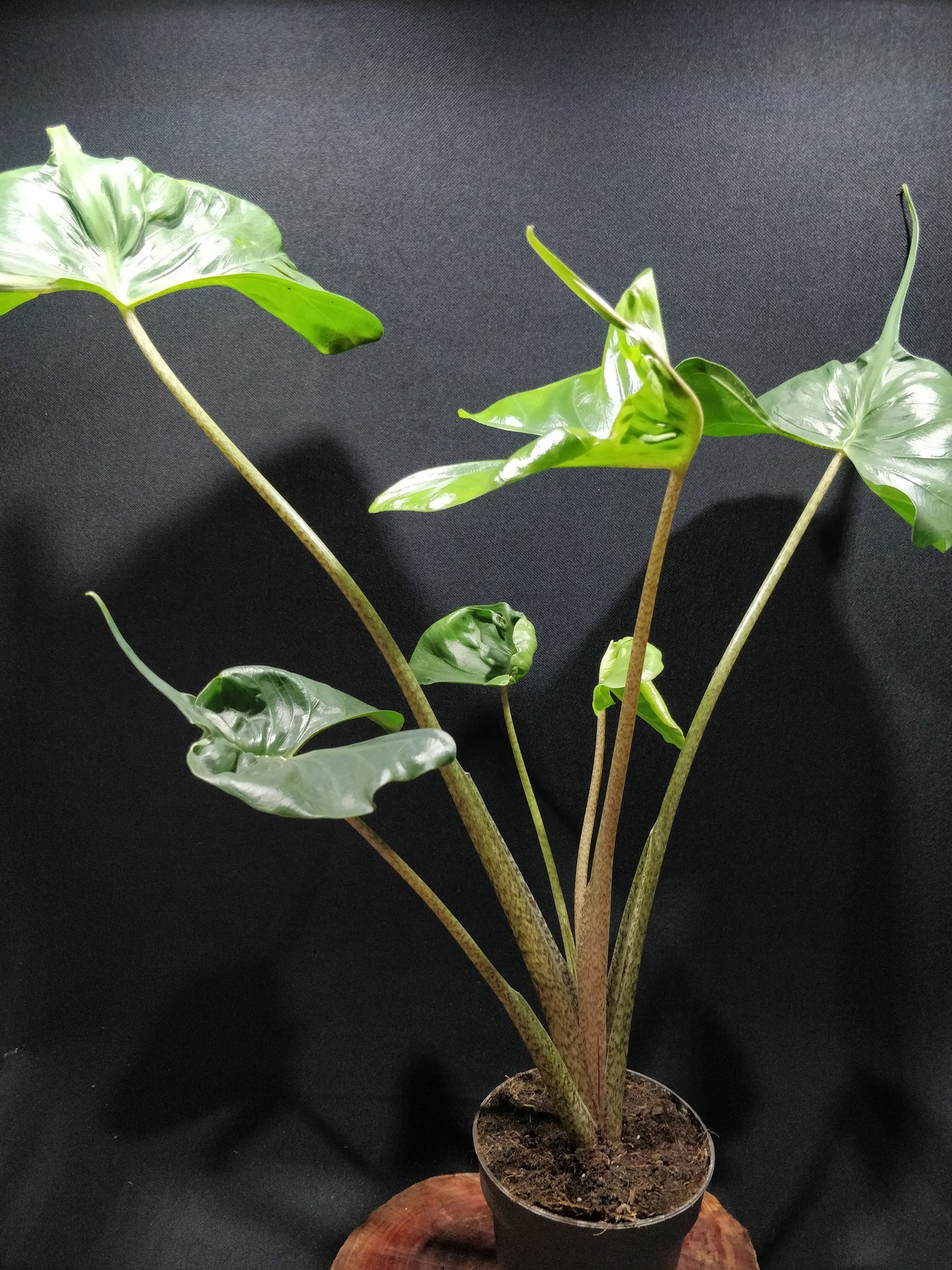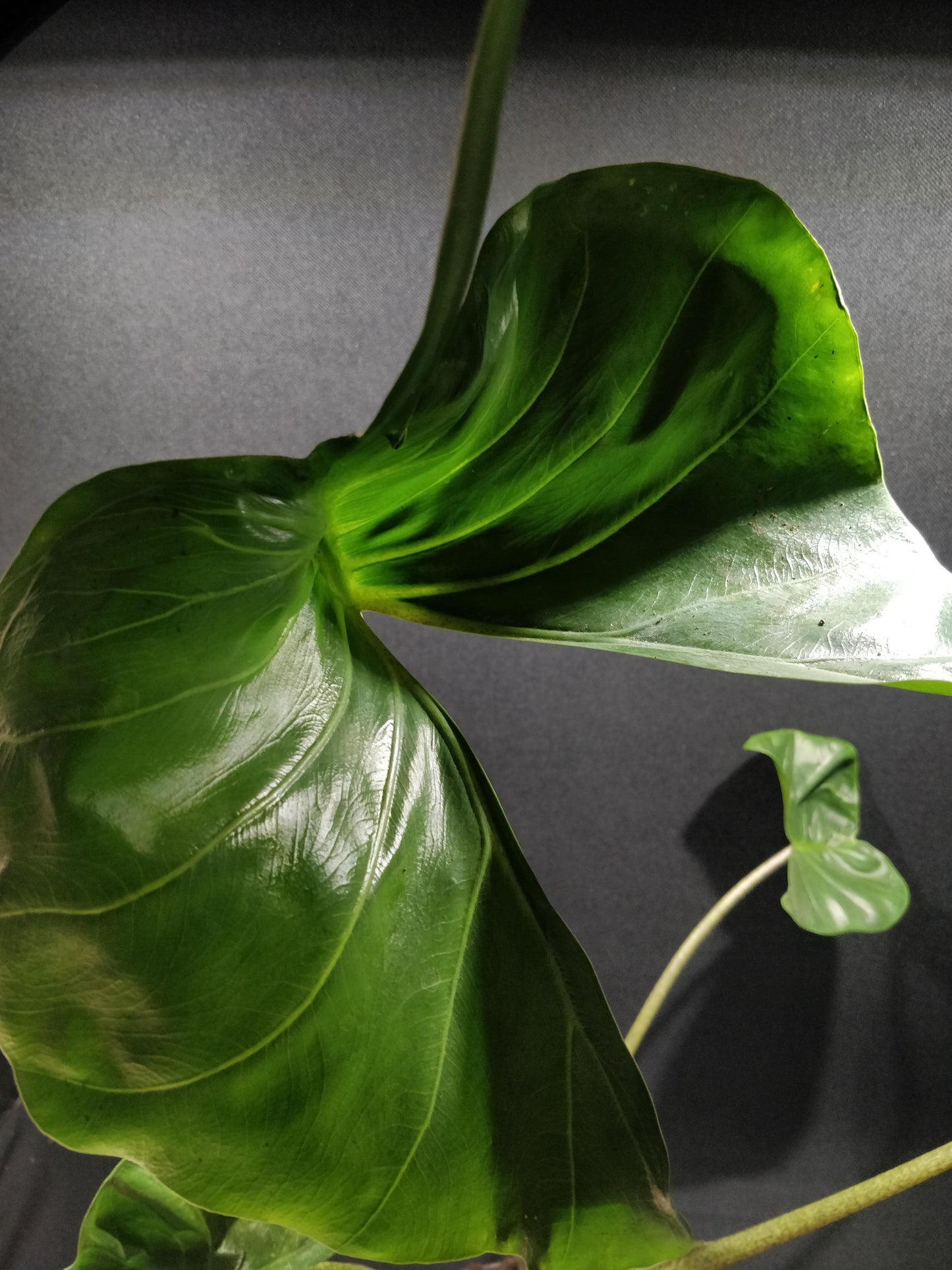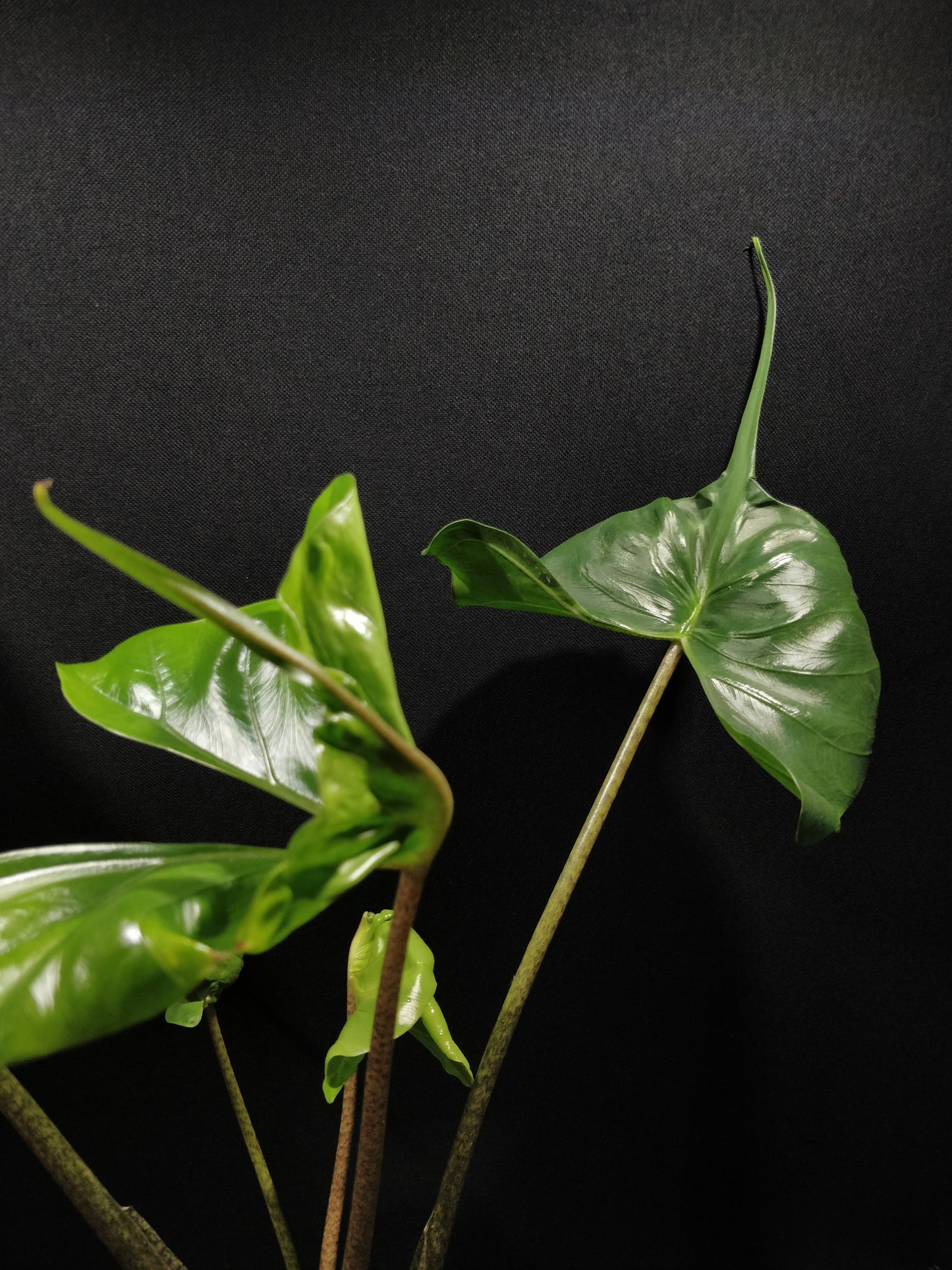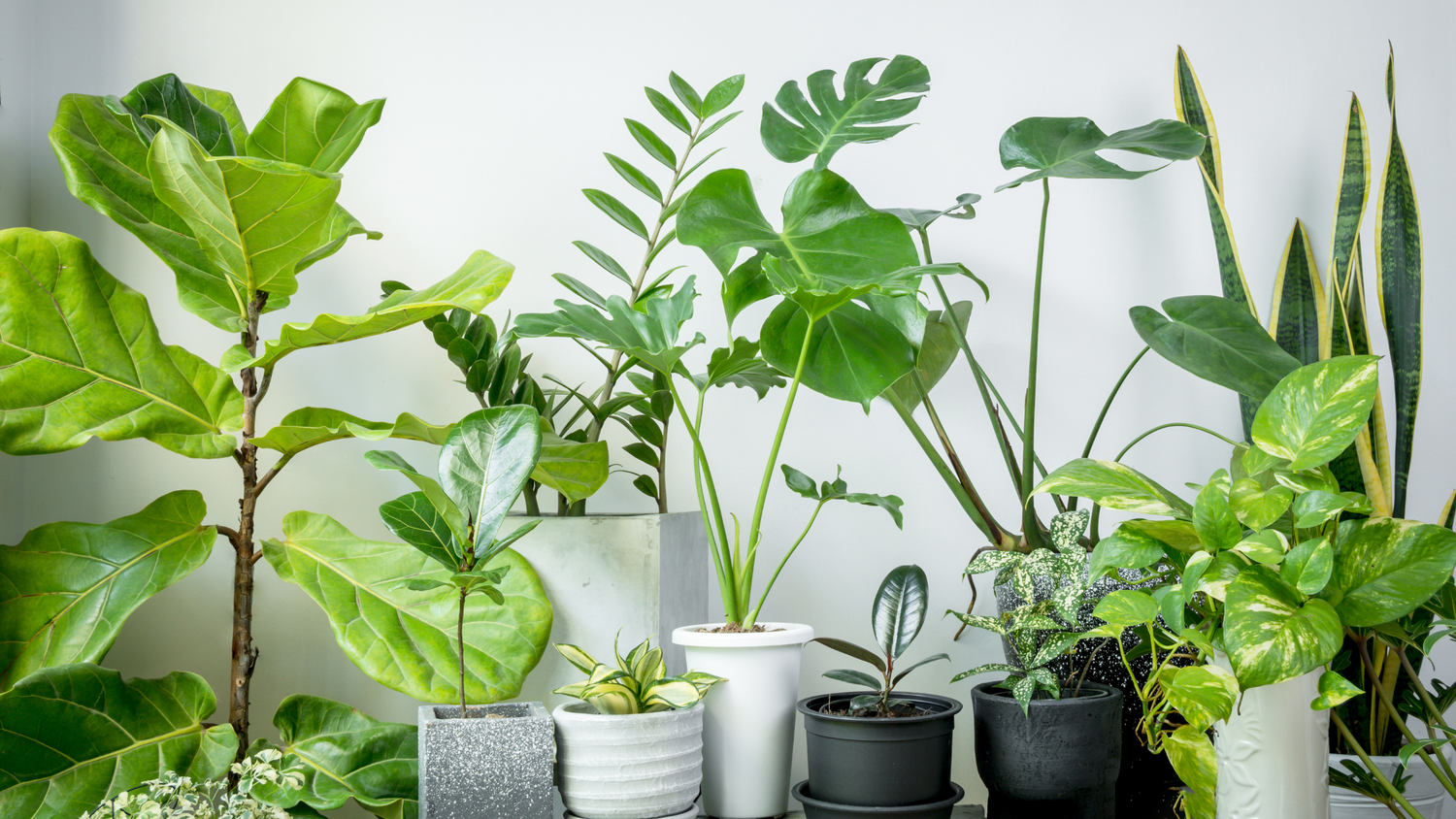Alocasia Stingray
Alocasia Stingray
Out of stock
Couldn't load pickup availability
Alocasia Serendipity is a beautiful and easy-to-care-for houseplant that is native to Southeast Asia. It is characterized by its large, heart-shaped leaves that are a striking shade of purplish-green. The undersides of the leaves are a deep purple color. Alocasia Serendipity can grow up to 4-6 feet tall, so it is important to give it enough space to grow.
Care Instructions
- Light: Alocasia Serendipity prefers bright indirect light. Too much direct sunlight can scorch the leaves.
- Water: Alocasia Serendipity should be kept evenly moist. Allow the soil to dry out slightly between waterings.
- Soil: Alocasia Serendipity prefers a well-draining potting mix that is rich in organic matter.
- Fertilizer: Fertilize Alocasia Serendipity every 6-8 weeks with a balanced liquid fertilizer.
- Humidity: Alocasia Serendipity prefers high humidity. If your home is dry, you can mist the leaves or place the plant on a pebble tray filled with water.
- Temperature: Alocasia Serendipity prefers temperatures between 18-28 degrees.
- Pests and Diseases: Alocasia Serendipity is susceptible to mealybugs, scale, and spider mites. If you see any pests, you can treat them with an insecticidal soap or neem oil.
Propagation: Alocasia Serendipity can be propagated by division or by leaf cuttings. To propagate by division, simply divide the root ball of a mature plant into two or more sections. To propagate by leaf cuttings, cut a leaf from the plant and allow it to dry for a few days. Then, plant the leaf cutting in a well-draining potting mix.
Troubleshooting:
- Yellowing leaves: Yellowing leaves can be a sign of overwatering or underwatering. If the leaves are yellowing and wilting, the plant is probably underwatered. If the leaves are yellowing and the soil is still moist, the plant is probably overwatered.
- Brown spots on leaves: Brown spots on leaves can be a sign of sunburn or pests. If the brown spots are on the upper surface of the leaves, the plant has been sunburned. If the brown spots are on the underside of the leaves, the plant may have pests.
- Drooping leaves: Drooping leaves can be a sign of underwatering or low humidity. If the leaves are drooping and the soil is dry, the plant is probably underwatered. If the leaves are drooping and the soil is moist, the plant may need more humidity.
Overall, Alocasia Serendipity is a beautiful and easy-to-care-for houseplant that is perfect for people of all skill levels. With proper care, it will thrive for many years to come.
Scientific Classification
Scientific Classification
Order: Alismatales
Family: Araceae
Genus: Alocasia
